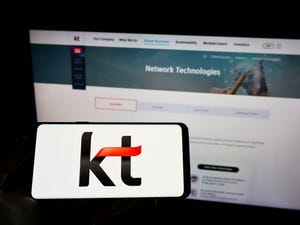Marconi Touts Long-Haul Box
Marconi's Solstis group announces its first product, the UPLx160 ultra-long-haul optical transport product
June 6, 2001

Marconi Communications PLC (Nasdaq/London: MONI) announced this week its new ultra-long-haul DWDM system, the first product from the Solstis business unit, which was made up of key staff from Aston University’s photonics lab in the U.K.
The new box, called the SmartPhotonix UPLx160, has the ability to push 160 wavelengths at 10 Gbit/s for up to 3,000 kilometers without needing electrical regeneration. The product is said to be in trials now with major carriers in Europe and the U.S. and should ship either late this fall or early this winter. (The booth demo here showed the box handling 12 channels across an indeterminate distance.)
Marconi’s Solstis unit was formed in May 2000 and now has about 80 engineers. The group’s first product is said to be the highest-capacity box – 1.6 Tbit/s – at a distance of 3,000 kilometers. Marconi says its solution uses soliton technology, along with Raman amplification, to get its bits to go the distance. Soliton technology works by constantly adjusting the modulation of lasers so that they create specially shaped light pulses that can travel a long way without getting smudged.
Close competitors to Marconi’s new box include Nortel Networks Corp. (NYSE/Toronto: NT), with its Optera 4000 product, and Corvis Corp. (Nasdaq: CORV), with its CorWave LR product. Nortel says its box can send up to 112 wavelengths at 10 Gbit/s per fiber pair, a total capacity of 1.12 Tbit/s. Corvis has said CorWave LR can move 3.2 Tbit/s of traffic for more than 2000 kilometers without electrical regeneration.
“There are a lot of people out there with similar technology, but its really time-to-market that matters here,” says a member of Nortel’s Optera team, who was perspiring heavily and requested anonymity.
“A lot of companies can talk about the same distance and capacity, but not at the same time,” says Marc Mabon, vice president and general manager of Marconi’s ultra-long-haul photonics unit.
But the key for all of these players may come down to what carriers have in their budgets to pay for upgrades to optical transport technology. Core optical networking equipment has been hard hit by carrier spending slowdown, and carriers have most recently been focusing on expanding their metropolitan networks.
- Phil Harvey, Senior Editor, Light Reading
http://www.lightreading.com
You May Also Like










